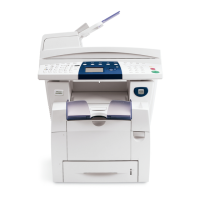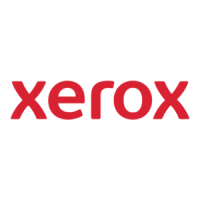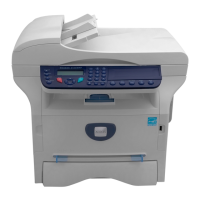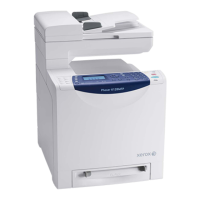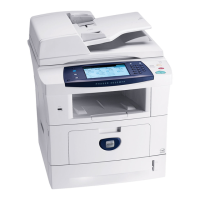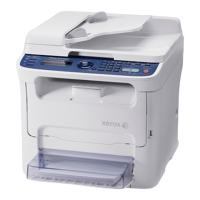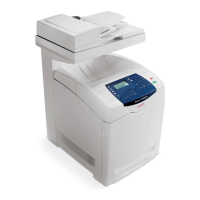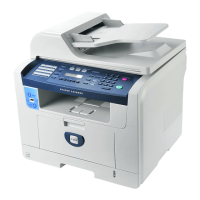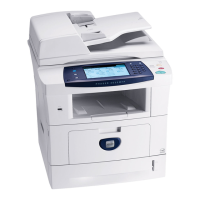09/2007
xxiv
Phaser 8860/8860MFP Service Manual
System Specifications
Initial Issue
Introduction
Electrical Specifications
Image Specifications
NOTE: To derive the skew specification for a particular media size, measure the width of the
leading edge in millimeters. Next, divide the measured length by 1000, then multiply by the
appropriate Image Area Tolerance specification in milli-radians. For example, A 5 in. by 7 in.
custom page would have a leading edge width, in millimeters, of 127mm (5 in.). Dividing the
127 by 1000 (127/1000), then multiplying the result by the 11 milli-radians specification results
in a maximum skew of 1.4 mm (127/1000) x 11 = 1.4 mm.
Environmental Specifications
NOTE: Check that the printer is on a stable, non-vibrating suface. Advise the customer to use
care not to shake the printer excessively when loading media or closing the Front Door. During
operation, the ink is in liquid form an can spill from the Printhead reservoir resulting in output
defects.
Media and Tray Specifications
The media trays accommodate most sizes and types of paper, transparencies, or other spe-
cialty media. Print the Paper Tips page for a list of supported media.
Media that May Damage the System
The system can use a variety of media for print and copy jobs. However, some media can
cause poor output quality, increased jams, or damage. Unacceptable media includes:
• Rough, plastic, or porous media
• Paper that has been stapled, folded, photocopied, or wrinkled
• Envelopes with windows, metal clasps, padding, or adhesives with release strips
• CD labels
• Media that is less than 60 g/m2 or more than 220 g/m2
Media Storage Guidelines
If media handling problems are a common occurrence, review the following storage guidelines
with the customer.
• Store paper in dark, cool, relatively dry locations. Most paper items are susceptible to
damage from ultraviolet (UV) and visible light. UV radiation, which is emitted by the sun
and fluorescent bulbs, is particularly damaging to paper items. The intensity and length of
exposure to visible light on paper items should be reduced as much as possible.
• Maintain constant temperatures and relative humidity
• Avoid light, heat, and dampness.
Noise Standby: < or equal to 45 dB
Scanning: < or equal to 50 dB
Table 9 Electrical Specifications
Characteristic Specification
Primary Line Voltages 90-135 VAC
180-254 VAC
Primary Line Voltage Fre-
quency Range
47 - 63 Hz
Power Consumption at Rated
Voltage Input
300 W (230 W 8860) average during printing
1500 W (1250 W 8860) peak - 1000 typical
220 W (180W 8860) at idle
Energy Star 70 W (43 W 8860)
Scanner Power Supply 30 W
Table 10 Print Engine Only Skew Specifications
Characteristic Specification
Printed Left Side Margin 5.0 mm +
2.0 mm (0.197 in. + .080 in.)
Leading Edge Margin 5.0 mm +
1.3 mm (0.197 in. + .050 in.)
Table 11 System Skew Specifications Scan, Copy, Print
Characteristic Specification
Printed Left Side Margin 5.0 mm +
4.0 mm (0.197 in. + .157 in.)
Leading Edge Margin 5.0 mm +
3.3 mm (0.197 in. + .130 in.)
Image Area Tolerance Zone
Image Skew, Envelopes 15.5 milli-radians max across the width of the leading edge.
Image Skew, Index Card 18.0 milli-radians max across the width of the leading edge.
Image Skew, All other sizes 11.0 milli-radians max across the width of the leading edge.
Table 8 Scanner/DADF Functional Specifications
Characteristic Specification
Table 12 Image Specifications
Characteristic Specification
Maximum Print Area 206 mm x 346 mm
Guaranteed Image Area 206 mm x 346 mm
Resolution/Gradation Fast Color: 300 x 300 dpi
Standard: 300 x 450 dpi
Enhanced: 563 x 400 dpi
Photo/Hi Res: 525 x 2400 dpi
Table 13 Environmental Specifications
Characteristic Specification
Operating Storage
Temperature
10
º
- 32
º
C / 50º - 90º F operating
-30°C to 60°C (-22 F to 140 F)
Humidity 10% - 80% RH Non-Condensing
operating
30% to 95% RH, non-condensing
Altitude 0 to 2,438 meters (8,000 ft.) 0 to 6,092 meters (20,000 ft.)
Acoustic Noise (db) Operating Mode Standby Mode
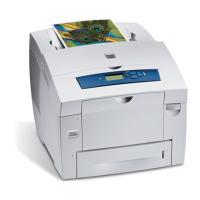
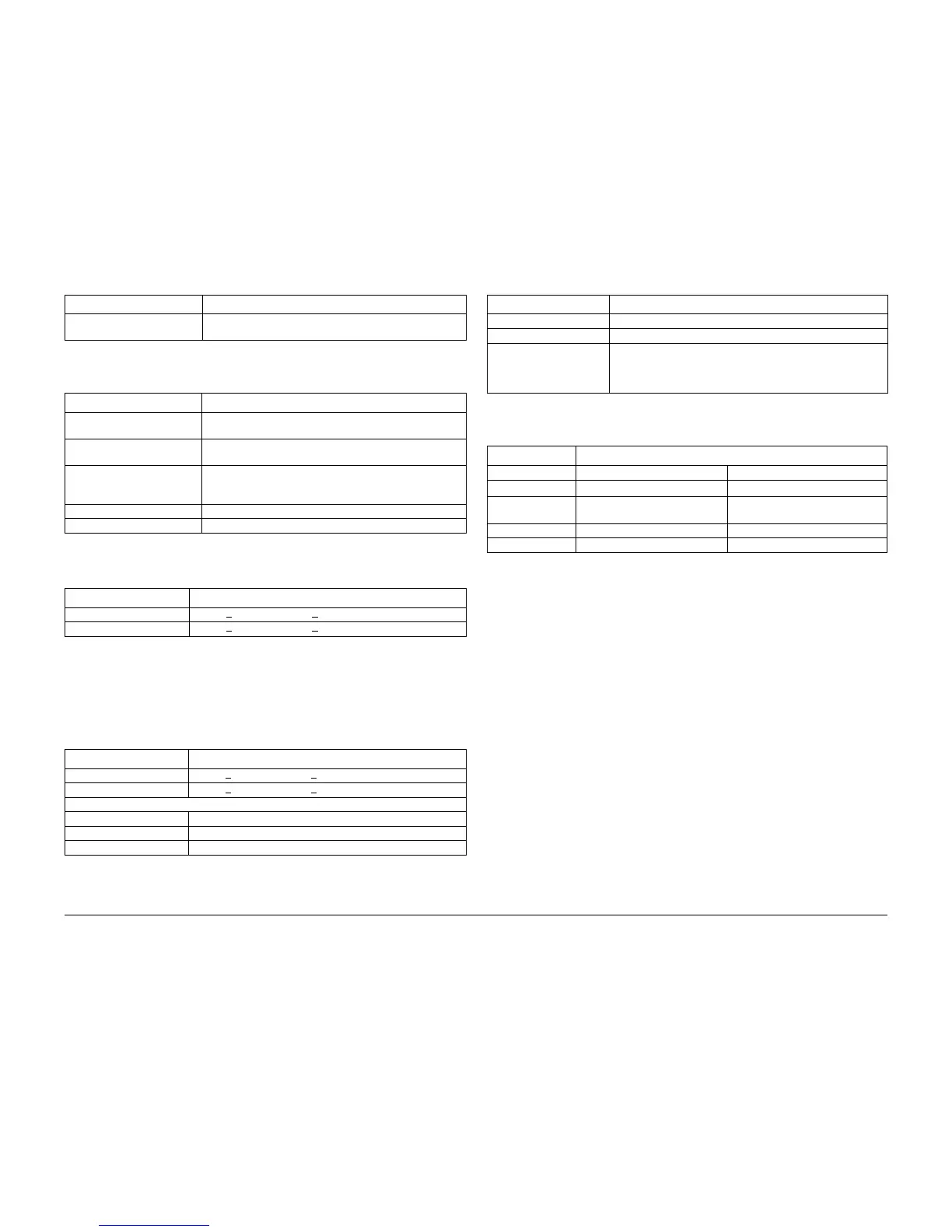